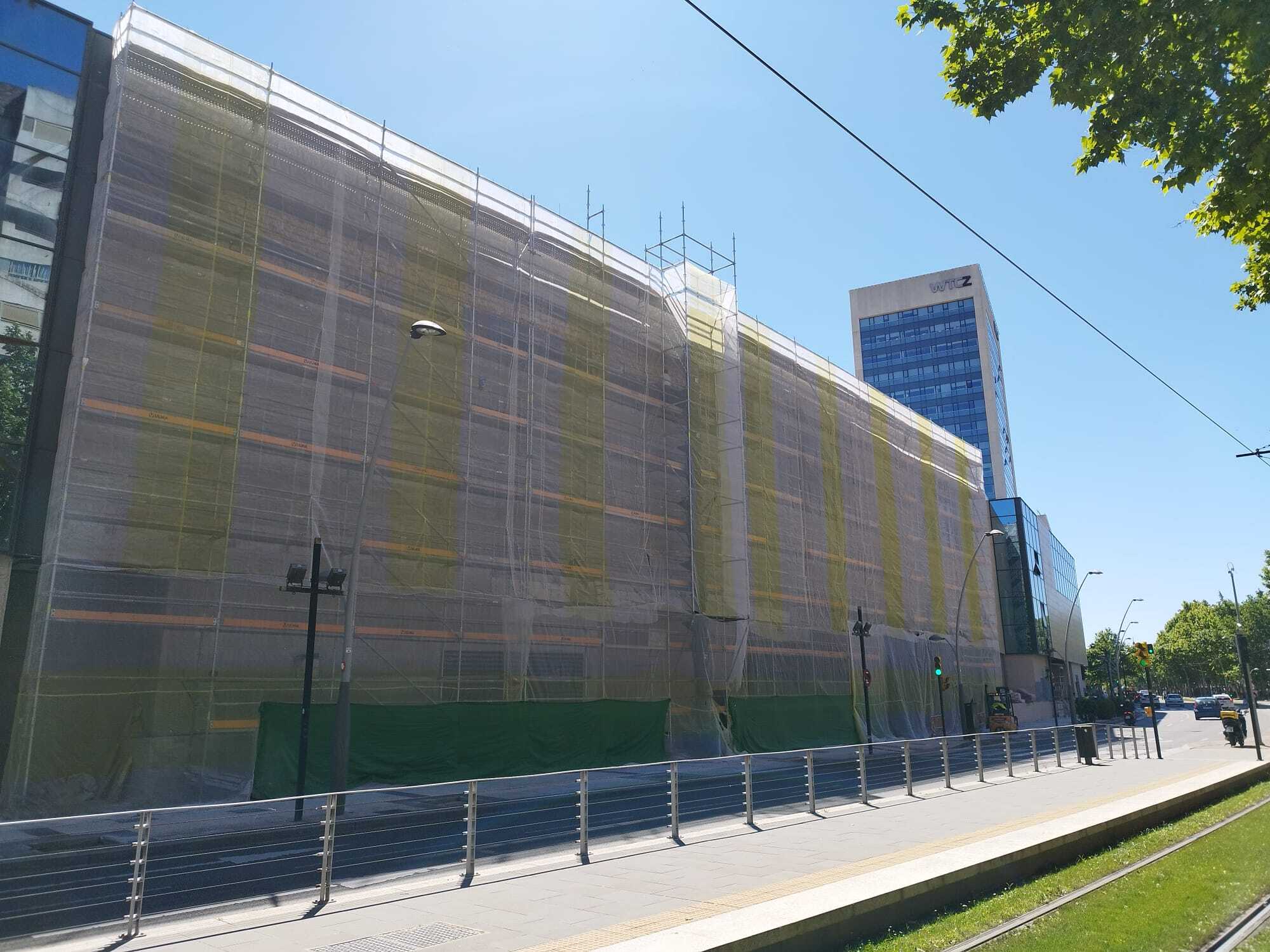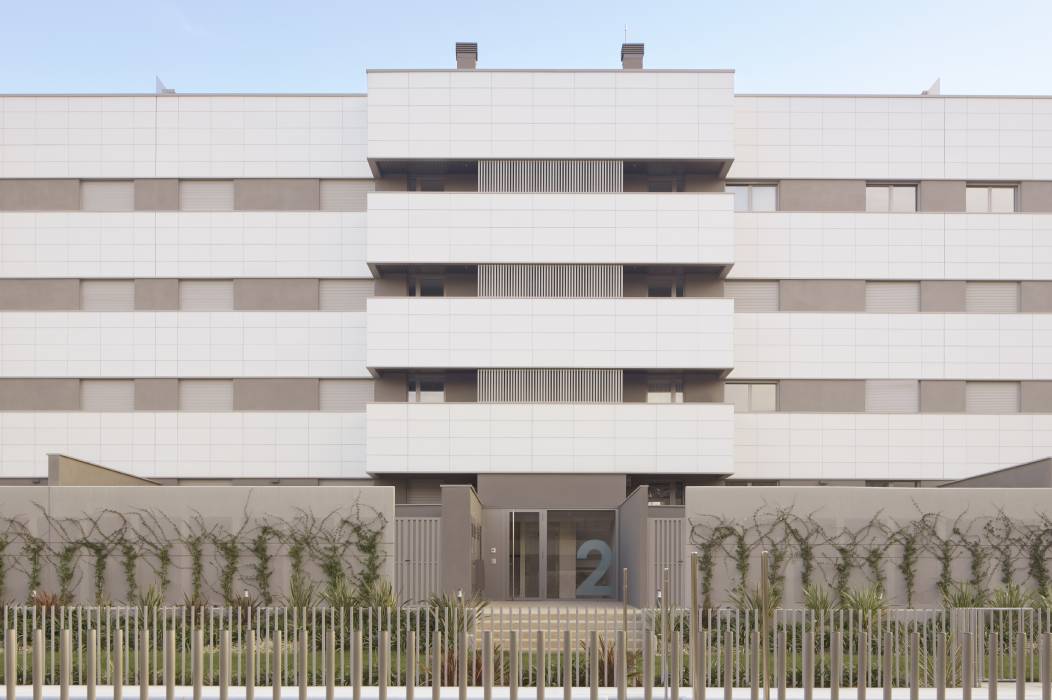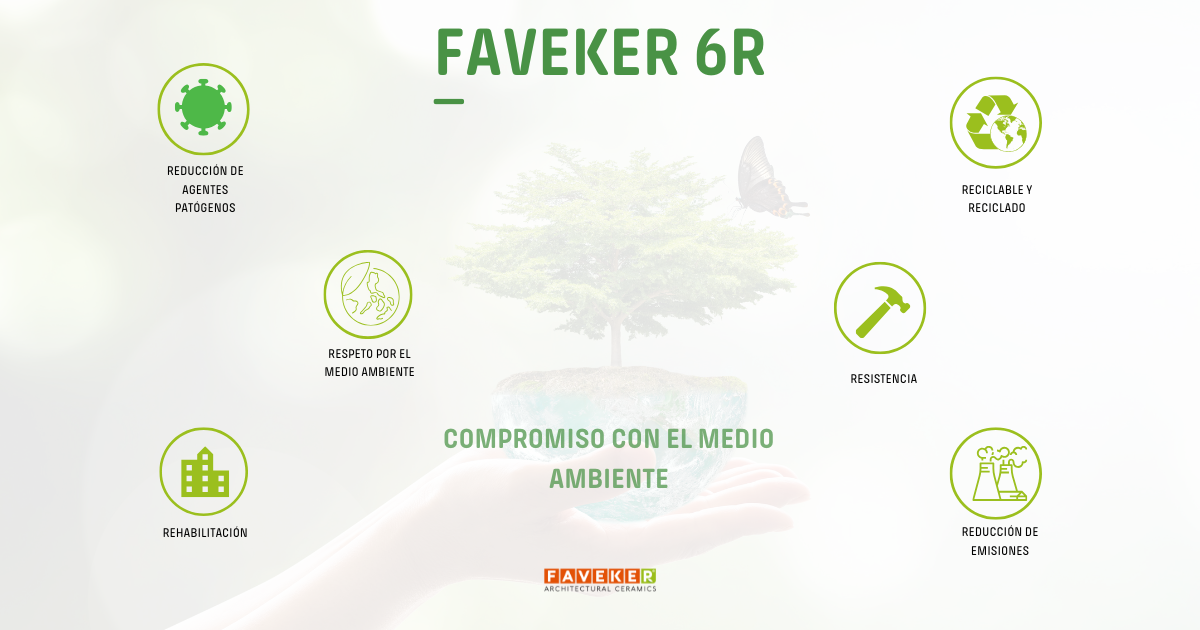
Sustainability of the 6Rs, the Faveker system based on the circular economy
In a global context where sustainability is no longer optional but rather a need, the concept of a circular economy has emerged as a solution to replace the linear system of take-make-waste with a model that fosters efficiency and responsible use of resources. This change not only involves reduce, reuse and recycle but also taking a broader approach. Let’s take a look at how FAVEKER® applies the principles of a circular economy to produce ceramic ventilated facades that are sustainable and in line with the Sustainable Development Goals (SDG).
What is a circular economy?
A circular economy is a production and consumption model that involves sharing, renting, reusing, repairing, renovating and recycling existing materials and products as many times as possible to create added value. Thus is stated in an article published by the European Parliament asking people to reflect upon the need to take measures to fight climate change and protect the environment.
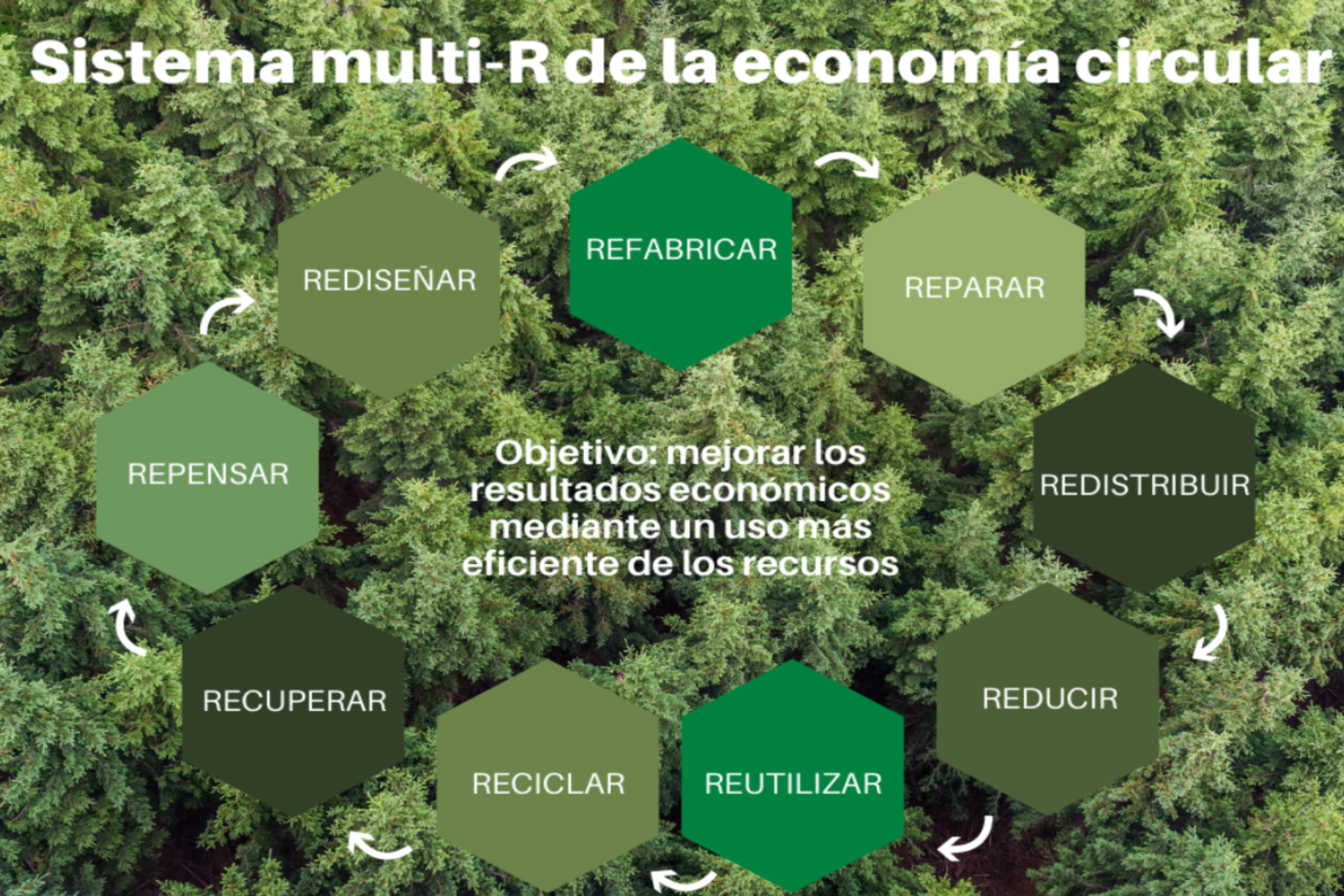
From the 3Rs to the 6Rs: a new outlook on sustainability
The classical 3R model (reduce, reuse, recycle) has evolved towards the 6Rs, thereby expanding its reach to comprehensively tackle environmental challenges:
- Reduce: minimizing resources and emissions during manufacturing and use.
- Reuse: giving materials a second life.
- Recycle: transforming waste into new resources.
- Redesign: innovating with product design to optimize lifecycles.
- Recover: rescuing materials and energy at the end of their useful life.
- Renovate: restoring and updating products to use them longer.
This approach makes it possible to separate economic growth from environmental impacts, thus promoting a fairer and more planet-friendly economy. According to ECODES-COEPLAN, a 45% reduction in greenhouse gas emissions could be achieved by applying circular economy criteria. The product lifecycle is extended as recycling means they remain in the economy.
A circular economy that is on the path towards sustainability
In order to balance economic health with the planet’s health, there’s no other alternative than being sustainable. So, what exactly is sustainability? The most often quoted definition is the one that appears in the Brundtland Report: “development that meets the needs of the present without compromising the ability of future generations to meet their own needs” (United Nations, 1987).
In order to be sustainable, not only industry must be circular but consumption as well. When it comes to industry, this change may include the inclusion of more efficient processes, while on the consumption side, it requires a change in mentality. The European economy of the 27 member states is 13% circular whereas the world average is 9%. We are facing an unstoppable transformation and FAVEKER® will not be left behind. That’s why we’ve coined our own 6R system.
The 6Rs marking the FAVEKER® sustainable model
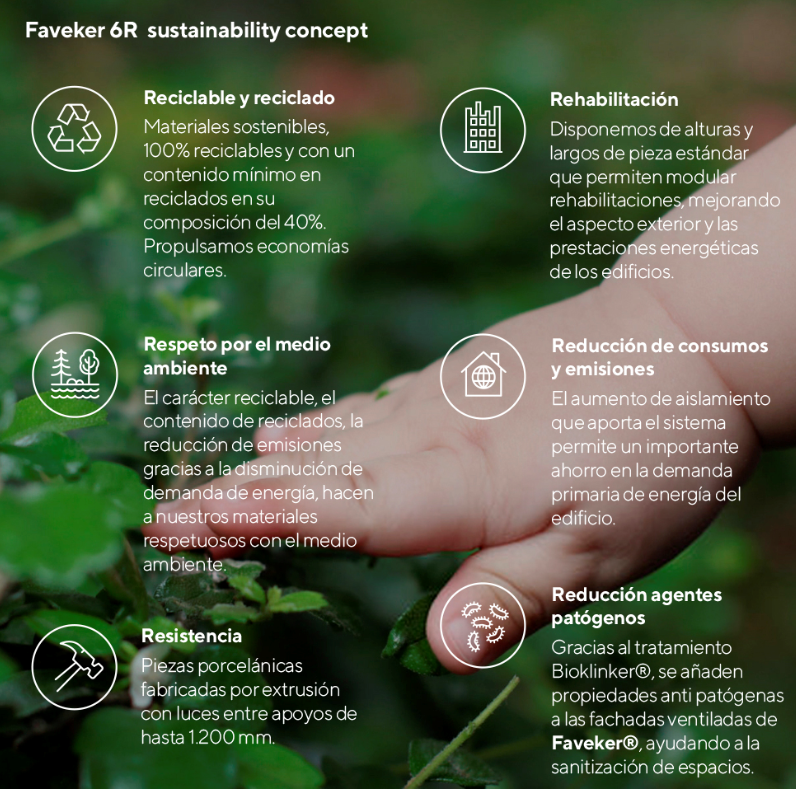
We’ve implemented a comprehensive sustainable model that affects ceramic ventilated facade solutions, their components and the production process. Our commitment to the circular economy is characterized by a “cradle to cradle” approach:
- 100% recyclable materials. FAVEKER® products are completely recyclable, which facilitates their reintegration into the production cycle at the end of their service life, and their content is recycled. We include at least 40% recycled materials in our ceramic pieces, taking advantage of the waste generated in our own manufacturing process.
- Lower consumption and emissions. Overall energy efficiency helps save energy and reduce pollution.
- Rehabilitation. Panels with dimensions that make it possible to modulate facade renovations and optimize the energy efficiency of buildings.
- Resistance. Extrusion-manufactured porcelain ceramic gives ventilated facade panels immense durability.
- A reduction in pathogenic agents. Bioklinker® technology makes it easier to include biocide surfaces and hygienic and sanitized architecture in healthy buildings.
- Respect for the environment. We are zero waste certified, which ensures all excess materials are recovered and reused. The 6Rs reflect a firm commitment to the environment.
Ceramic ventilated facades: a sustainable solution from start to finish
FAVEKER® ceramic ventilated facades not only are able to meet the high demand for sustainable buildings but also offer high energy performance, thus enhancing habitability and lowering energy consumption. The thermal inertia of buildings with ventilated facades is one of the benefits, but there are more.
Benefits of FAVEKER® ceramic ventilated facades
- Thermal and acoustic insulation. They improve occupant comfort and lower the energy bill.
- Efficiency in rehabilitation projects and new construction work. They adapt to renovation projects as well as modern construction jobs.
- Certificates that rate building performance. They help meet BREEAM, LEED and PASSIVHAUS standards, which are essential in projects seeking to lead in sustainability and promote energy efficiency.
The FAVEKER® commitment to sustainability is backed by international certifications such as UNE EN 9001 and UNE EN 14001, which guarantee the quality of our processes and products. Added to this is our Environmental Product Declaration (EPD) which is recognized by Global EPD and the ECO Platform, thus ensuring traceability and a lower impact from our panels.
The circular economy and a 6R model: the FAVEKER® commitment to sustainability
With our commitment to the 6Rs, we work to offer products that not only comply with sustainability expectations, but also help build a more responsible future. If you’re looking for materials that combine design, innovation and respect for the environment, FAVEKER® is the ideal partner when it comes to building a more sustainable world. Join the change and contact us to find out more about our ventilated facades that can transform any project.

